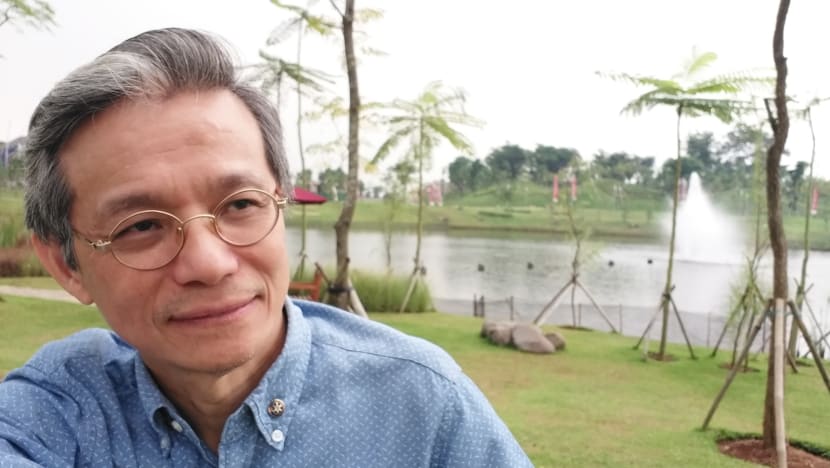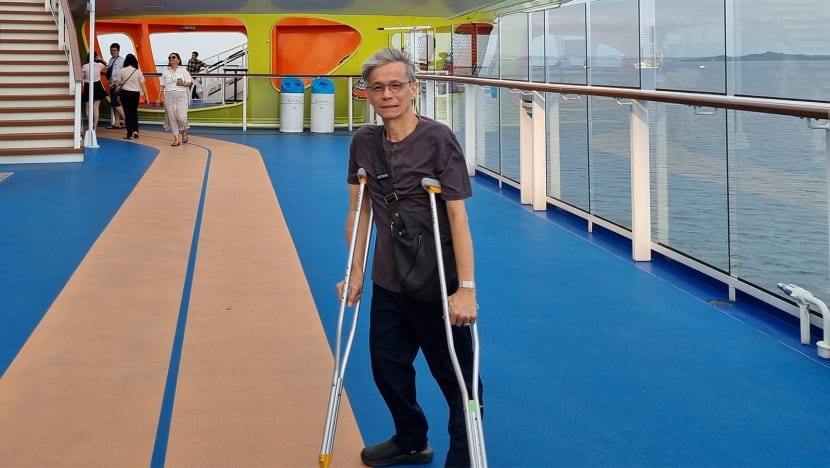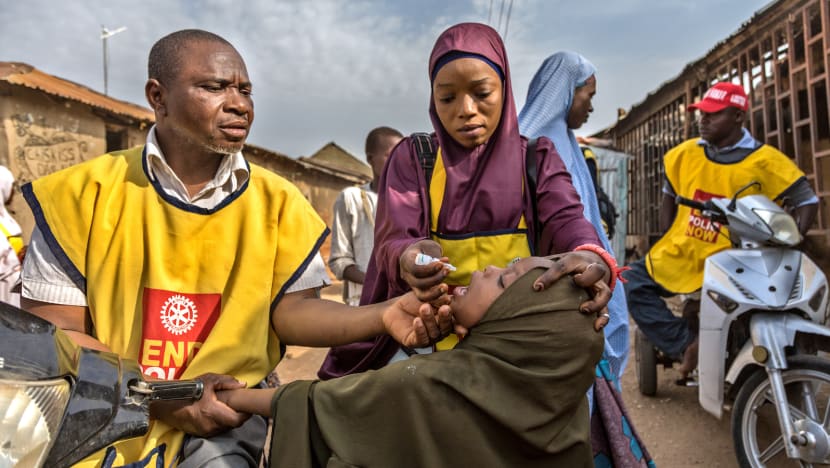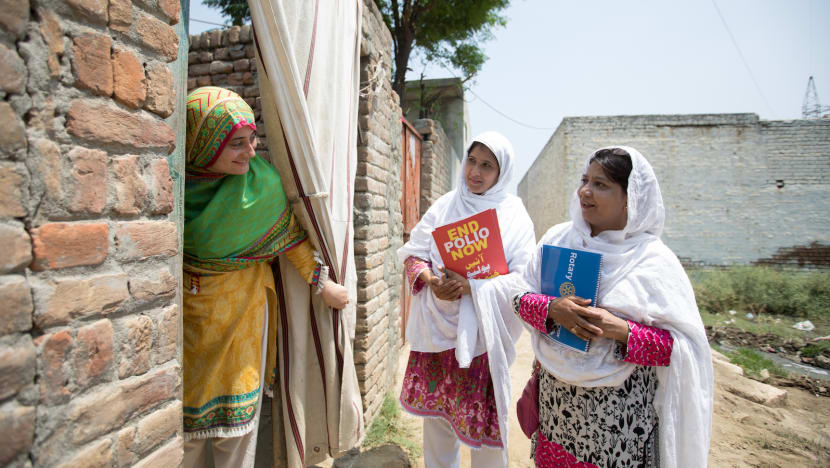From abandonment to advocacy: The remarkable journey of a polio survivor who became an advocate for polio vaccination
Mr John H G Soe, a Rotary Club member, shares the driving force behind his commitment to global polio eradication efforts.

Polio survivor John H G Soe is a member of the Rotary Club of Jakarta Sentral International. Photo: John H G Soe

This audio is generated by an AI tool.
For many, polio might seem like a disease of the past, but for Mr John H G Soe, its effects are a daily reality.
Although Mr Soe has undergone four orthopaedic surgeries to mend his legs and can now move independently and drive a car, he still uses crutches. The memories of crawling on the floor as a child, and later, using steel callipers and wooden crutches to walk, remain etched in his mind.
For the past two decades, Mr Soe, 65, has been a vocal proponent of Rotary International’s efforts to end the spread of polio.
“Every child deserves a childhood free from the threat of preventable diseases,” said Mr Soe, an architect and interior designer, and father of two. “If polio poses a threat to even one child anywhere in the world, all children, wherever they live, remain at risk.”

While there is no cure for polio, there is a vaccine. In 1988, Rotary International became a founding partner of the Global Polio Eradication Initiative with the World Health Organization (WHO). Rotary has raised funds, increased awareness about immunisation and conducted vaccination drives globally, collectively helping to immunise over 3 billion children against polio in 122 countries.
At four months old, Mr Soe was abandoned by his parents at a hospital in Medan, Indonesia, after he was diagnosed with polio. He was later sent to an orphanage in the same city.
“My parents believed that I was a curse and a calamity for the family,” shared Mr Soe. At the time, polio was not well understood by the general public in Indonesia. “People only knew it as ‘limped leg’ and sufferers were often subjected to ridicule by children at school and in public places,” recounted Mr Soe. “They would imitate the limp and mockingly refer to them as ‘the crippled’.”
Mr Soe’s condition led to paralysis in the legs. “When I started school, which was about 2km away from the orphanage, I was carried on the back by an older child, or I took a pedicab if it was raining,” he shared.
When he was 14, a Dutch-Italian businessman named Ted de Ponti changed his life. A Rotary member based in Singapore, Mr de Ponti came to the orphanage in Medan to adopt a child. Following the nuns’ recommendation, he adopted Mr Soe.
“That Sunday noon, I waited from early morning, wearing my best clothes. When we met, he looked at me and gave me a big, long hug. I felt so much warmth through that first contact,” said Mr Soe of their initial encounter.
While Mr Soe continued to stay on at the Medan orphanage for some time due to Mr de Ponti’s frequent travels, the latter subsequently arranged for him to be taken to Singapore for surgery. After four operations and nine months in the hospital, Mr Soe was able to use his legs again. “It was life-changing,” he said.
With the support of Rotary, Mr Soe went on to complete his education. He studied architecture in Singapore and interior design in London, before starting his own architecture firm in Jakarta.
Although his journey was not without its challenges, Mr Soe found resilience through his experience. “Polio left me with a lot of advantages. I learned not only to be independent, but to insist on it,” he said. “For many years, I had to struggle and come to terms with my disability. Now, I feel empowered to utilise and display my abilities.”

“He taught me the importance of sharing our wisdom about living and loving with a life-long disability,” said Mr Soe. “Rotary has done so much for me, and by sharing my experiences, I feel like I’m giving something back.”
WHY THE FIGHT AGAINST POLIO ISN’T OVER
Although efforts to end polio have led to a 99.9 per cent reduction in polio globally, the disease remains a threat. Because variant polio outbreaks can emerge when not enough children are vaccinated against the disease, immunisation remains crucial to keeping an epidemic at bay.

“Polio can’t be cured, but it can be prevented,” he said. “While there has been a positive change in attitudes towards polio immunisation for children, it’s crucial that awareness and eradication efforts persist.”
Take action by visiting rotary.org today.













